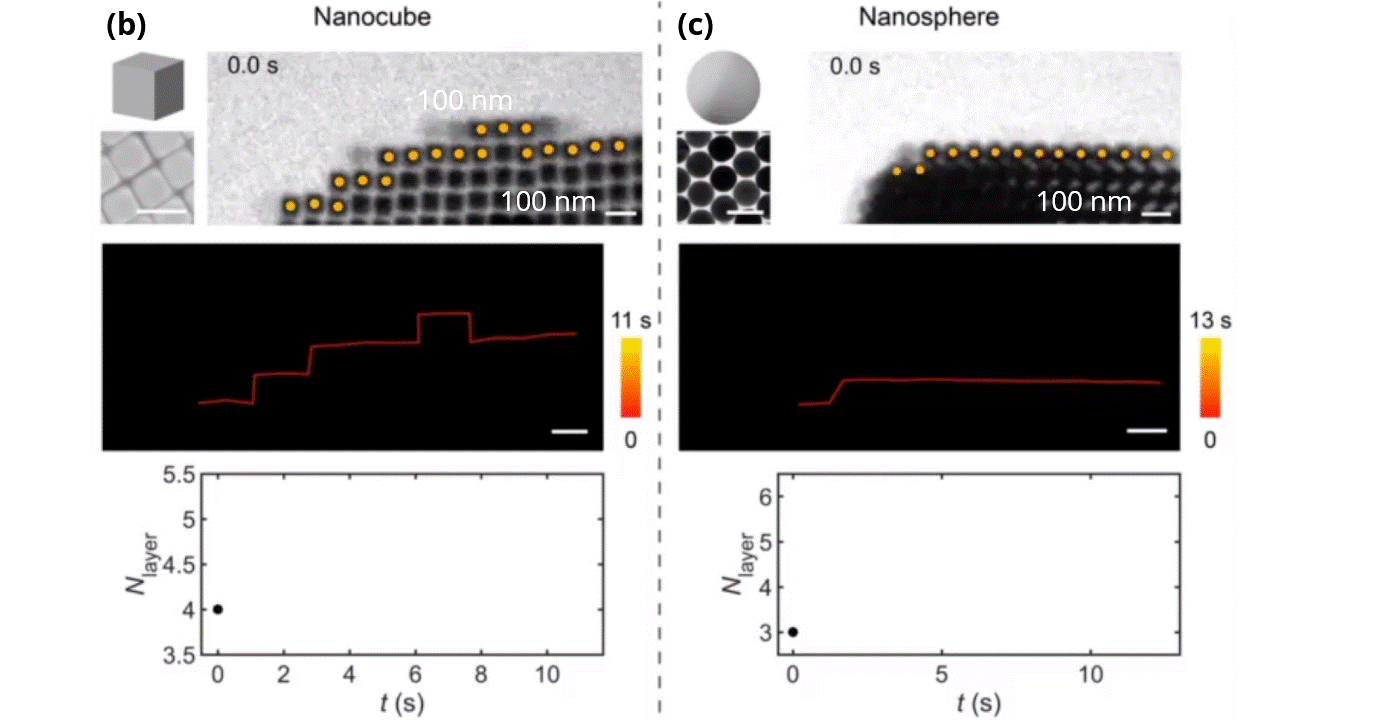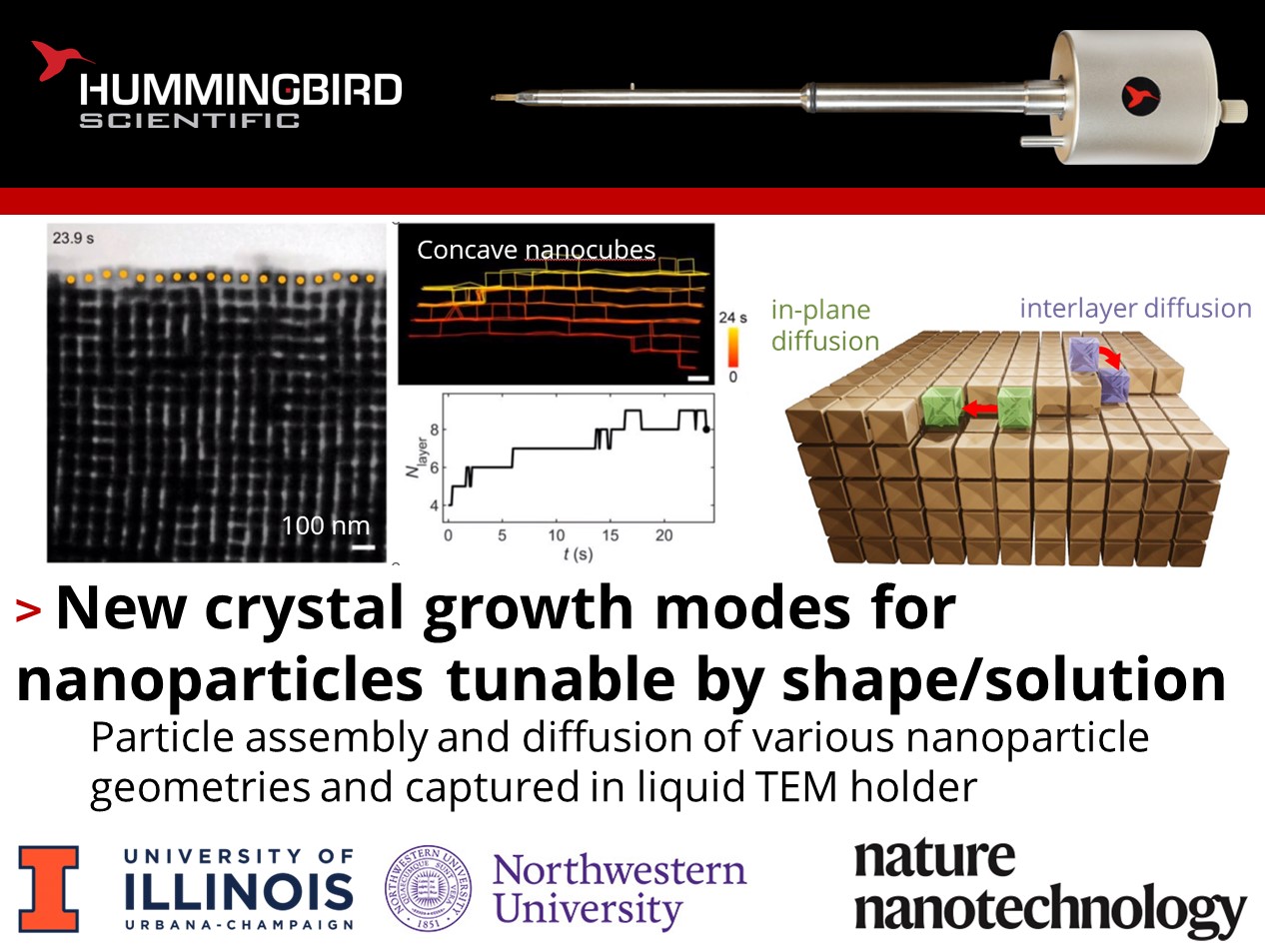Curious about how different nanoparticle shapes aggregate into larger crystals?
Binbin Luo, Qian Chen, and their colleagues at the University of Illinois-Urbana Champaign and Northwestern University published recent work using their Hummingbird Scientific in-situ liquid flow TEM sample holder to investigate the nucleation and growth of crystals formed by aggregation of gold nanoparticles of various shapes. Both smooth layer-by-layer and rougher multilayer out-of-plane growth are demonstrated using a combination of in-situ imagine under liquid cell transmission electron microscopy (LC-TEM) and molecular dynamics (MD) simulations.


Figures showing TEM-liquid phase videos of layer-by-layer (LBL) growth of a smooth crystal from a) gold concave nanocubes, b) gold nanocubes and c) gold nanospheres alongside synchronized interface profile tracking and a graph of the number of layers over time. Scale bars, 100 nm. Copyright 2023 Springer Nature
These two growth modes could be independently controlled by tuning the nanoparticle shape and the conditions of the solution used to suspend them. This allowed the determination and confirmation of two entirely new growth modes: mounds with straight steps, and layer-by-layer growth with rough steps. These growth modes are determined by the diffusion rate and the ratio of in-plane diffusion barrier to step-edge diffusion barrier, and these experimentally measured parameters combined with kinetic Monte Carlo simulations (KMC) allowed the construction of a master phase diagram for crystalline growth modes and surface morphology based on these parameters. The insights from directly tracking individual nanoparticles in a variable liquid solution unify our understanding of crystal growth across four orders of magnitude of particle size. Moreover, the ability to manipulate surface morphology and defect density by controlling the nanoscale growth kinetics creates new opportunities for designing structured nanomaterials.
Reference: Binbin Luo, Ziwei Wang, Tine Curk, Garrett Watson, Chang Liu, Ahyoung Kim, Zihao Ou, Erik Luijten, Qian Chen, Nature Nanotechnology 18 589-595 (2023) DOI: 10.1038/s41565-023-01355-w
Full paper Copyright © 2023 Springer Nature
View All News

